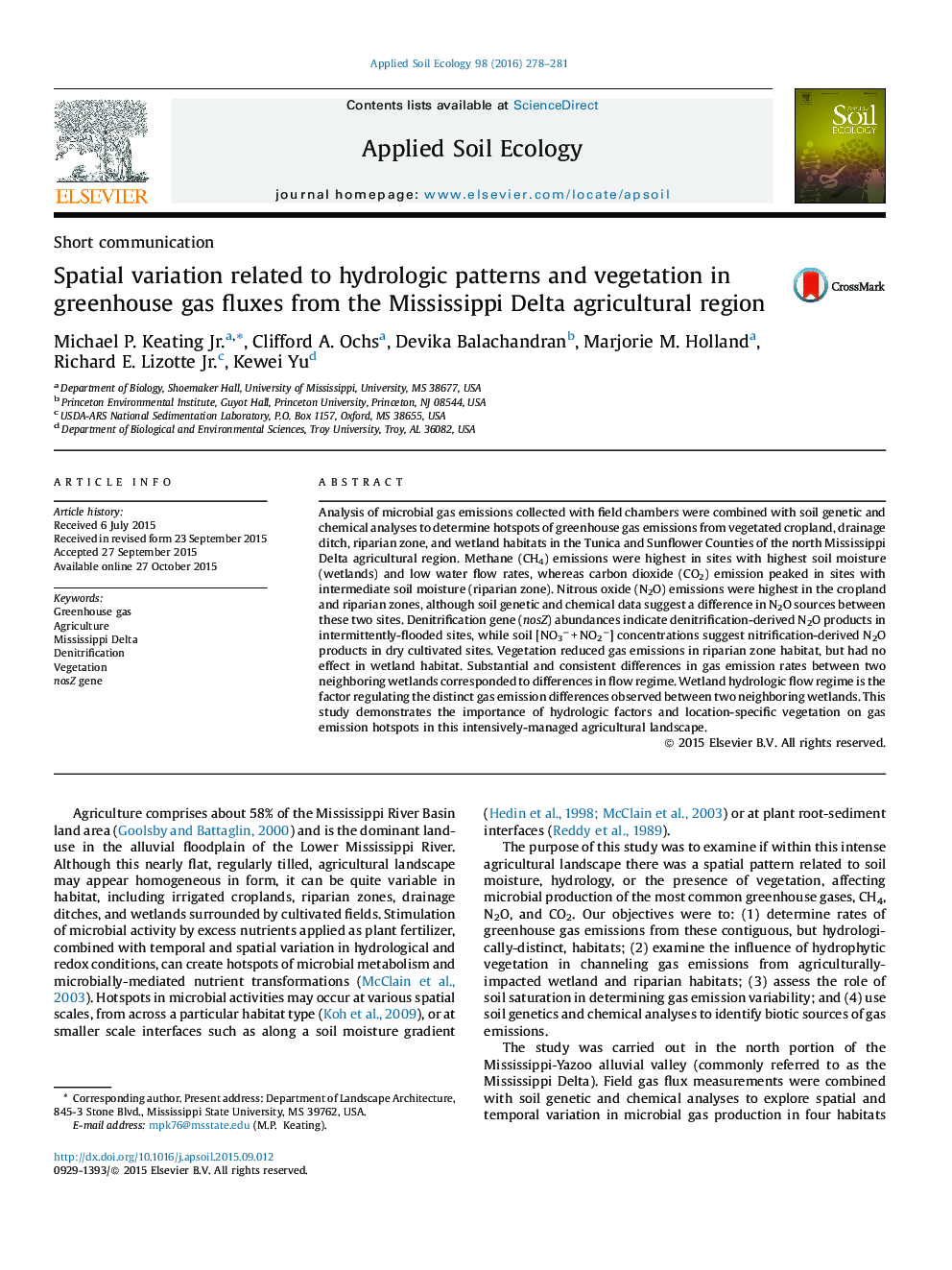| کد مقاله | کد نشریه | سال انتشار | مقاله انگلیسی | نسخه تمام متن |
|---|---|---|---|---|
| 4381880 | 1617785 | 2016 | 4 صفحه PDF | دانلود رایگان |
• CH4, N2O, and CO2 emission patterns were closely tied to soil moisture levels.
• Wetlands differing in hydrologic regime were differed in gas emission signatures.
• Soil analyses indicate both nitrification and denitrification derived N2O products.
• Vegetation reduced riparian zone gas emissions, but had no effect in wetlands.
Analysis of microbial gas emissions collected with field chambers were combined with soil genetic and chemical analyses to determine hotspots of greenhouse gas emissions from vegetated cropland, drainage ditch, riparian zone, and wetland habitats in the Tunica and Sunflower Counties of the north Mississippi Delta agricultural region. Methane (CH4) emissions were highest in sites with highest soil moisture (wetlands) and low water flow rates, whereas carbon dioxide (CO2) emission peaked in sites with intermediate soil moisture (riparian zone). Nitrous oxide (N2O) emissions were highest in the cropland and riparian zones, although soil genetic and chemical data suggest a difference in N2O sources between these two sites. Denitrification gene (nosZ) abundances indicate denitrification-derived N2O products in intermittently-flooded sites, while soil [NO3− + NO2−] concentrations suggest nitrification-derived N2O products in dry cultivated sites. Vegetation reduced gas emissions in riparian zone habitat, but had no effect in wetland habitat. Substantial and consistent differences in gas emission rates between two neighboring wetlands corresponded to differences in flow regime. Wetland hydrologic flow regime is the factor regulating the distinct gas emission differences observed between two neighboring wetlands. This study demonstrates the importance of hydrologic factors and location-specific vegetation on gas emission hotspots in this intensively-managed agricultural landscape.
Journal: Applied Soil Ecology - Volume 98, February 2016, Pages 278–281
